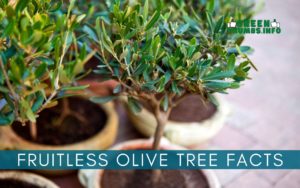Mexican olive trees are a popular choice for gardens and landscapes alike. Not only do they have beautiful, glossy leaves that provide the perfect backdrop to your outdoor space, but their ability to adapt to a variety of climates makes them an ideal choice for gardeners looking for a hardy tree.
Pruning Mexican olive trees can help promote healthy growth and even extend the tree’s lifespan, making it a worthwhile endeavor for any gardener.
In this article, we’ll provide you with all the information you need to prune your Mexican olive tree properly, from choosing the right tools to post-pruning care. So let’s get started!
What is a Mexican Olive Tree?
The Mexican Olive Tree (Cordia Boissieri), also known as a wild olive or Texas olive tree, is an evergreen shrub or small tree native to the southern tip of Texas and northern Mexico. It is part of the borage family and grows near water sources on the plains of southern Texas in the United States.
It has deep green leaves that are large and leathery and produces trumpet-shaped flowers that are bright white in color. The tree also produces tiny fruit that resembles olives, although it is not related to true olives.
Mexican Olive Trees are often used as background screens or flowering accents in landscaping due to their ornamental value. They can be grown in both sunny and partially shaded areas, making them a versatile addition to any garden.
Benefits of Pruning Mexican Olive Trees
Pruning your Mexican olive tree will help promote healthy and strong growth, as well as keep the branches from becoming too large or burdensome on the tree. Pruning can also remove dead or diseased branches and help to improve the overall appearance of the tree.
By removing overcrowded branches, you can also help the tree’s overall structure and ensure that it gets adequate sunlight to promote healthy growth.
Finally, pruning can also be used to shape the tree into a desired form or size, making it easier to maintain.
Preparing for Pruning
Before you begin pruning your Mexican olive tree, it is crucial to have a plan and set your goals. Knowing what you want to achieve with your pruning efforts will help ensure that it is done correctly and safely.
Once you have an idea of what needs to be done, it’s time to gather the right tools for the job. You’ll need a pair of sharp bypass pruners or loppers, as well as long-handled pruning saws for larger branches. Make sure that all of your tools are clean and sharp, as dull or dirty blades can damage the tree’s bark.
Safety is also important when it comes to pruning, so make sure to wear protective clothing such as gloves and safety glasses.
Step-by-Step Guide to Pruning a Mexican Olive Tree
Once you’ve gathered the necessary tools and safety equipment, follow these steps for pruning your Mexican olive tree:
Step 1: Inspecting the Tree for Dead or Diseased Branches
Start by inspecting the tree for any dead or diseased branches. These should be removed first as they can spread decay and disease to the rest of the tree.
Remove any dead or diseased branches carefully, cutting them back to the nearest healthy joint in the branch.
Step 2: Cutting Away Dead and Diseased Branches
Next, you will want to trim away any dead or diseased branches. These can be identified by their discolored, wilted leaves and should be removed to prevent them from spreading disease to the rest of the tree.
Make sure to cut back these branches to the nearest healthy joint in the branch.
Step 3: Trimming Back Crowding and Overgrown Branches
After removing any dead or diseased branches, you can start trimming back any overcrowded or overgrown branches. This helps to keep the tree’s overall structure in check and make sure it gets enough sunlight.
You should also remove any weak or spindly growth that detracts from the look of your tree.
Step 4: Removing Crossing, Weak and Rubbing Branches
Finally, you will want to remove any crossing branches and rubbing branches. These can cause damage to the tree if left in place and should be removed carefully.
You can also trim back any weak or spindly growth that is detracting from the look of your tree.
Post-Pruning Care
After pruning your Mexican olive tree, it is important to take care of the tree to help promote healthy and strong growth. Make sure to remove any fallen branches or twigs from around the tree as these can attract disease-causing pests.
You should also water the root system of the tree regularly and make sure to apply a slow-release fertilizer to help encourage healthy growth. Finally, you should prune your tree at least once a year to keep it in good shape.
Conclusion
Pruning your Mexican olive tree is a great way to promote healthy and strong growth and improve the overall appearance of your tree.
By following the steps outlined in this guide, you can ensure that your Mexican olive tree will thrive for years to come.
By taking the time to prune your Mexican olive tree regularly, you can also help keep it looking its best and prevent any diseases or pests from spreading to other parts of the garden.
With proper care and maintenance, your Mexican olive tree will be a beautiful addition to any landscape.

